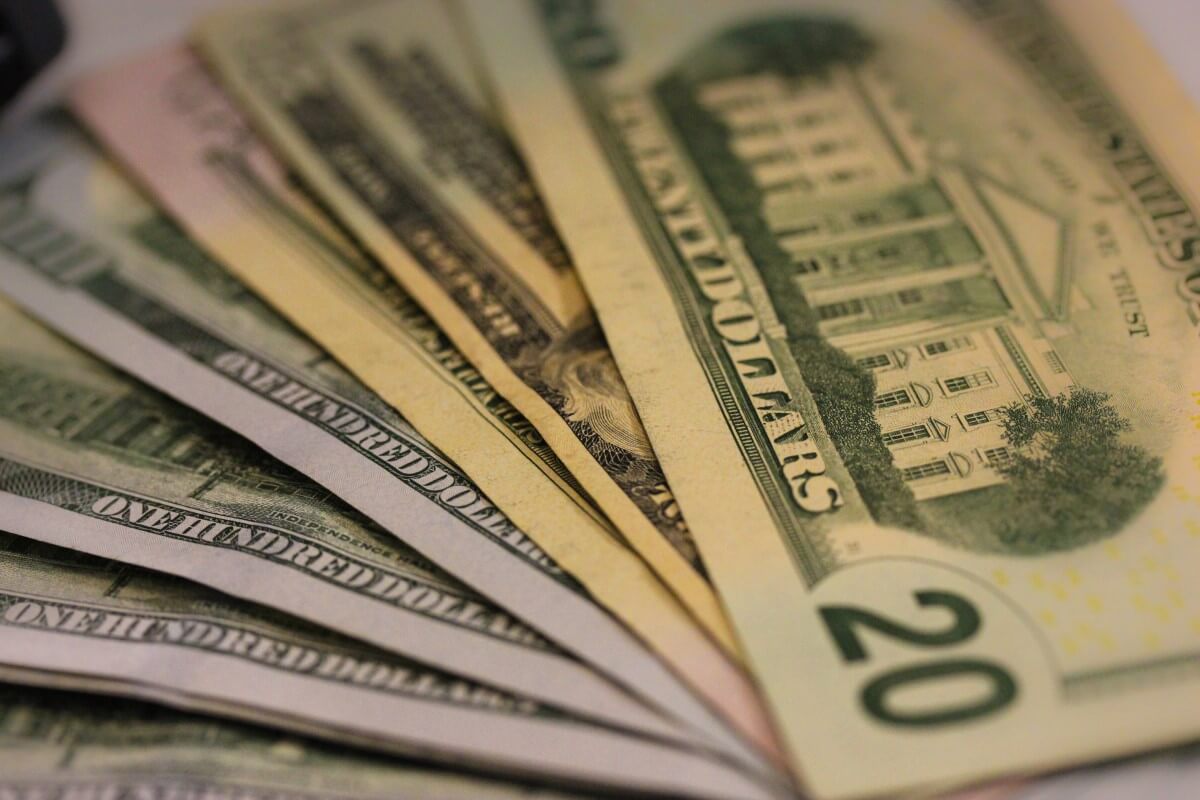The U.S. dollar plummeted on Monday, lowering from a 1-1/2 year high reached on Friday. Over the weekend, hawkish comments by a Federal Reserve official pushed the U.S. yield curve to its flattest levels in almost three months.
After last week’s meeting, the agency clearly telegraphed a March interest rate hike. Despite that, some traders still believe that policymakers are preparing the markets for a faster pace of rate increases this year to counterfeit inflationary pressures.
Meanwhile, analysts worry that a quicker rate hike pace might dampen future growth expectations. A similar scenario is already playing out in the bond markets. The spreads between two and ten-year U.S. Treasury yields tumbled below 59 bps for the first time since early November.
Forex markets are broadly unsure of the impact of the expected Federal Reserve’s rate hike trajectory on inflation and economic growth. Some investors took the latest statements from the agency’s Bostic as an opportunity to take profits on the greenback’s surge in recent days.
Mizuho strategists noted that currency market expectations of as many as five rate hikes in 2022 reflect the growing belief that the Federal Reserve is behind the curve in fighting upside inflation risks. As a result, the agency will need to deliver more front-loaded tightening.
How did the U.S. dollar trade at last?
On Monday, the greenback dropped by 0.2% to 97.02 against a basket of its rivals after skyrocketing to a mid-2020 high at 97.44 on Friday. The U.S. currency’s 1.6% rally last week was the biggest weekly surge since mid-2021. Thus far, long dollar positions have remained near their highest levels this year.
On Monday, the Aussie was among the early gainers against the struggling dollar. The Australian dollar climbed up by more than 0.5% to $0.7043. Investors are now waiting for the results of a central bank policy meeting on Tuesday.
The Bank of England has scheduled its meeting for Thursday. The BOE reversed the pandemic stimulus after inflation soared to its highest level in almost 30 years. Economists predict a second rate hike from the bank in less than two months.
The European Central Bank’s policy meeting is also due on Thursday. Traders don’t expect any policy change. Still, analysts warn that approaching rate hikes from the Federal Reserve will likely shrink the ECB’s window for action.
What about the EM currencies?
Emerging market currencies firmed on Monday, with investors waiting for major central bank meetings. Accommodative stances from major central banks significantly helped inflows into riskier assets during the Covid-19 pandemic crisis. However, higher rates pose a serious threat, especially for emerging economies. The latter has already fallen behind the curve in tightening monetary policy.
Furthermore, weak growth in China’s factory activity in January also indicates that there may be some trouble for emerging market economies dependent on demand from China. Commerzbank analysts stated that a further drop in China’s exports could pressure the yuan.
In addition, the Lunar New Year holidays are thinning volumes in Asia. Even though hMSCI’s index of emerging market stocks rallied by 0.9%, it is still set to end the month lower by about 2.5%. On the other hand, its currencies counterpart climbed up higher as the greenback declined slightly from multi-year highs hit last week.
On Monday, the Turkish lira jumped by 1.4% despite investors’ worries about political interference in the policy. President Tayyip Erdogan decided to replace the country’s statistics institute’s head. That occurred ahead of inflation data due on Thursday. Analysts expect the data to show that consumer prices soared by 47% annually in January, hitting the highest level in nearly 20 years.
Ulrich Leuchtmann, the head of FX and commodity research at Commerzbank, also noted that the Turkstat change would likely fuel the market’s suspicion that President Erdoğan is interfering with the independence of an institution again. Even if the market no longer believes the data, it will wonder whether a bigger nominal depreciation in the exchange rate is justified.
How did the Russian rouble fare?
The rouble skyrocketed by 1% on Monday. Two leading U.S. senators stated on Sunday that the U.S. Senate is very close to reaching a deal on legislation to sanction Russia over its actions on Ukraine. Meanwhile, Moscow denies any plan to invade the country.
Strategists at Citigroup noted that the rouble should have traded at 66 a greenback in the absence of geopolitical risk. The currency stood at 77.29 at last.
Read also: CryptoIFX Review (2022) | Is it a good Forex broker?











